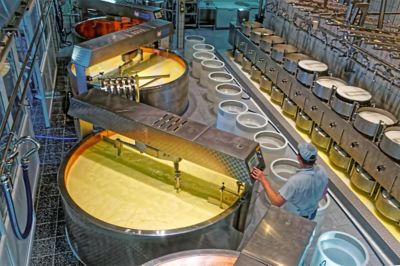Behind the scenes of artisanal creameries and modern cheese factories, nitrogen generator equipment is emerging as a flavor-defining force, redefining the art and science of cheese production. From the first curd to the final aging process, the influence of nitrogen generator equipment is as subtle as it is profound, shaping the very essence of cheese as we know it.
The Chemistry of Cheese
Cheese, the result of the delicate interplay between milk, enzymes, and microorganisms, is a culinary marvel. The intricate processes of curdling, coagulating, and aging yield a spectrum of flavors, textures, and aromas that captivate the senses. Yet, beneath this gastronomic poetry lies a scientific truth: the control of air quality.
Air quality, particularly the presence of oxygen, is a double-edged sword in cheese production. Oxygen is essential for the growth of desirable microorganisms during the fermentation process, a key step in cheese-making. However, once the cheese reaches its desired composition, oxygen becomes an adversary, inviting the risk of spoilage, off-flavours, and texture degradation.
Nitrogen: The Flavour Guardian
Enter nitrogen generator equipment, a technological sentinel that orchestrates the delicate balance of oxygen in the cheese-making process. Nitrogen, an inert gas, finds its vocation in safeguarding the quality and integrity of cheese from inception to indulgence.
During the fermentation process, nitrogen is a catalyst for perfection. In cheese factories and creameries, nitrogen generator equipment creates an environment rich in this noble gas, ensuring that beneficial microorganisms flourish. This controlled atmosphere encourages the development of desirable flavours and textures, setting the stage for cheeses that delight palates around the world.
As the aging process commences, nitrogen takes on a new role: that of the flavour guardian. It envelops cheeses in an oxygen-free cocoon, preventing the intrusion of unwanted bacteria and preserving the purity of flavor profiles. Whether it's the nutty richness of an aged cheddar or the delicate tang of a bloomy rind cheese, nitrogen's influence is the invisible hand that guides each note of taste and aroma.
Taste & Texture: Nitrogen’s Specialty
Cheese is not just about taste; it's a visual and tactile experience. The smooth surface of a gouda, the marbled veins of blue cheese, the delicate ripples of a camembert – these visual cues set the stage for the gustatory journey that follows. Nitrogen generator equipment contributes to this sensory tapestry through a phenomenon known as cryogenic freezing.
In cheese production, cryogenic freezing involves the rapid freezing of cheese to preserve its structure and texture. Nitrogen, in its liquid form, achieves this feat. When nitrogen is introduced, it rapidly chills the cheese, forming microcrystals that maintain the cheese's integrity. As a result, when the cheese is thawed, its original texture is preserved, creating a visual and tactile experience that mirrors its freshly crafted state.
Cryogenic freezing also plays a role in producing grated and shredded cheeses that don't clump together. By flash freezing cheese shreds with a blast of liquid nitrogen, nitrogen generator equipment ensures that individual shreds remain separate, enhancing convenience for consumers and culinary professionals alike.

Sustainability and Efficiency: The Green Footprint of Nitrogen
In an era characterised by sustainability concerns, the cheese industry is stepping up its commitment to eco-conscious practices. Nitrogen generator equipment aligns seamlessly with this ethos, offering a green footprint that benefits both the industry and the planet.
Traditionally, nitrogen was sourced in the form of gas cylinders, a practice that incurs transportation and delivery costs, along with associated carbon emissions. Nitrogen generator equipment transforms this paradigm by producing nitrogen on-site, eliminating the need for external suppliers. This on-demand approach not only reduces logistical complexities but also slashes carbon emissions, contributing to the industry's sustainability goals.
Moreover, the efficient operation of nitrogen generator equipment minimises energy consumption. The technology's ability to produce nitrogen with high purity and yield ensures that every molecule of gas is put to optimal use. This energy efficiency resonates with the cheese industry's commitment to resource conservation, fostering a more sustainable and economically viable production process.
Innovative Packaging: Freshness in Every Bite
The marriage of technology and tradition in the cheese industry extends to the realm of packaging. Nitrogen generator equipment enables innovative packaging methods that enhance cheese preservation and consumer experience.
Modified Atmosphere Packaging (MAP), a technique facilitated by nitrogen, involves replacing the air within a cheese package with a controlled gas mixture. This technique extends the shelf life of cheeses, ensuring that consumers enjoy the same fresh flavours and textures from the first slice to the last. By maintaining an optimal atmosphere within the packaging, nitrogen generator equipment contributes to reducing food waste and enhancing consumer satisfaction.
A Taste of Transformation: The Future of Cheese
As the cheese industry navigates an era of culinary innovation and sustainability imperatives, the influence of nitrogen generator equipment continues to grow. From preserving flavours to enhancing textures, from controlling microbial environments to reducing food waste, the role of nitrogen in cheese production is far-reaching.
Nitrogen generator equipment stands as a quiet partner in the culinary alchemy that transforms milk into delectable cheeses. It's a technology that respects tradition while embracing progress, celebrating the art of cheese-making while elevating its precision. As cheese connoisseurs savor the fruits of this symbiotic alliance between science and flavour, the silent symphony of nitrogen generator equipment plays on, ensuring that every bite of cheese is a masterpiece in its own right.





